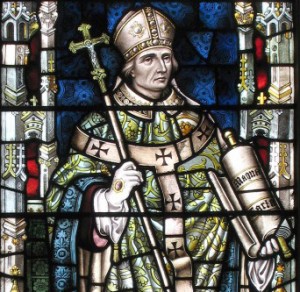
It’s the End of the World as We Know It and the Most Common Symptom Is: I Feel Fine
September 9, 2020
The CoVID Regime of the International Bio-Security State
April 9, 2021Magna Carta
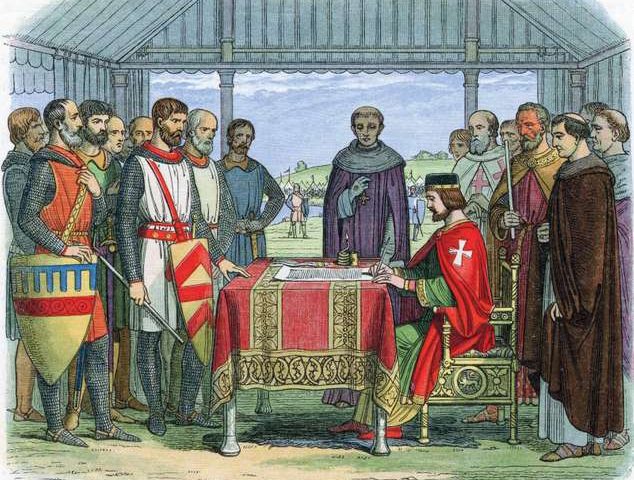
June 15, 1215 the Articles of the Barons were agreed and King John I sets his seal. Runnymede beside the Thames between Windsor and Staines now in county of Surrey.
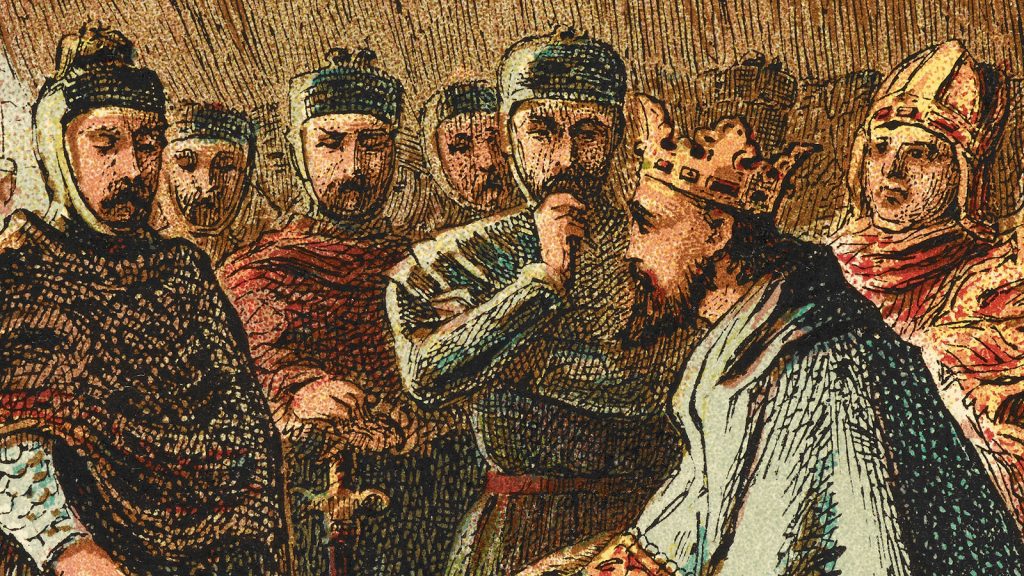
“No legal officer shall start proceedings against anyone on his own mere say-so, without reliable witnesses being brought for the purpose. “
Nullus balivus ponat aliquem ad legem, simplici sua loquela, sine testibus fedelibus ad hoc aductis.
Magna Carta 1215 A.D. ( Chapter 38 )
In the Articles of the Barons 1215, both England’s Common and Westminster Law were assumed and implicit, especially The Dooms of King Alfred the Great (9th century) which began with the Ten Commandments. The Articles sealed by King John were ratified in their re-issue as Magna Carta by the monarch of England (King Henry III), the Archbishop of Canterbury and Rome.
In the Articles, King John I ratified The Dooms of King Alfred the Great
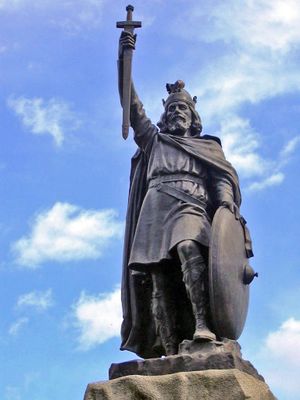
Alfred the Great, King of Wessex
( 23 April 871 – 26 October 899 A.D.)
The Magna Carta recognized provisions of the Common Law and Westminster Law such as the right to trial by jury of peers, also going back to The Dooms of King Alfred, as does the writ of habeas corpus. This is a prerogative writ of the Sovereign addressed to a lower court, sheriff or private subject to produce a prisoner before the royal court. However, anyone , not just the free man could make a petition of habeas corpus to know the charges against him.
Magna Carta also contained the prohibition of usury from The Dooms as recognized by the precepts of the Church both East and West. Over history this prohibition may have become more honoured in the breach than the observance by Western states and kingdoms, including Rome itself – as when the papal states fell to the republican phase of the Great Revolution (inaugurated 1789). In the bloodbath on the Italian peninsula under the Masonic Revolutionaries of the Palladium Rite: Giuseppe Garibaldi and Giuseppe Mazzini, that war could not be settled until The Owners of the Revolution itself threw down their central bank on top of the Kingdom of Italy (1861). And so they monetized the debt of their newly minted corporate asset of their Empire of The City of London Corporation and its Money Pyramid.
As an instrument of the Synagogue , however, the right to usury was always contested down the centuries by Church and state. In the Western foundations it was always prohibited, as they were in the foundations of England.
Clause 39 of the 1215 Articles provides that no free man shall be arrested or imprisoned or disseised or outlawed or exiled or in any way victimised, neither will we attack him or send anyone to attack him, except by the lawful judgement of his peers or by the law of the land. This ancient right and libertie of England was ratified by King John I and King Henry III for the whole of England.
The city of London is covered more thoroughly in Chapter 13 and in Chapter 9 of Magna Carta 1297 edition) than the earlier editions.
“The city of London shall have all the old liberties and customs [which it had prior to 1215 ]. Moreover, we will grant that all other cities, boroughs, towns and barons of the five ports, and all other ports shall have all their liberties and free customs.”
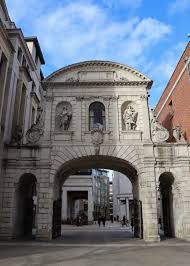
Temple Bar Gateway is the only surviving gateway into The City of London
The laws of the Anglo Saxon kings refer to liberties of London and The City in particular. Before the Norman Conquest (1066) , London had not achieved the status of being the capital of a unified country, but the Freemen were entitled to benefit of the law. Those in servile status were the serfs and villeins. They did not have hereditary title to their lands, rather they held their land at the will of their lord, living and working on his estate . They received justice from their lord. The parishes of their diocese upheld their ancient Common Law rights to field and stream, highways and bye-ways, right of forage, right to mow meadows for hay, right of the Commons, etc.
London at the time of Magna Carta was described as a ‘bundle’ [fasces in terms of Roman law] of communities, townships, parishes and lordships each with its own charter.
The phrase ‘old liberties and customs’ makes reference to these franchises by charter or patent granted by previous sovereigns such as the charter of William I. It also covered the charters which refer to various matters of Anglo Saxon law such as: the Court of Husting which sat in Guildhall, folkmotes, wardmotes [shire moots] sokes, writ of withernam, exemption from pleas outside the walls, wager of battle, miskennings, scot and lot, bridtoll (bridgetoll) and danegeld.
Scot and lot certainly hasn’t changed and, of course, tolls ( although the troll of Northern folklore awaiting the wayfarer under the bridge is now just a computerized beep). Like the poor, the danegeld will be with us always whether the Danes themselves are collecting or not.
What is to the fore in this Great Charter is the concept of due process under law.
This is above all the Christian right of a baptised nation as seen and understood by the Church, the Kings and the nobility of England and Britain holding original (allodial) and hereditary title. The Great Charter they framed and ratified gives definition and expression to this conviction. The development of its legal principles in Anglo jurisprudence has passed as a foundational legacy to the governments of all nations that were formed in England’s blood and nationhood.
Magna Carta is considered to be the foundation for individual rights in American jurisprudence. One third of the provisions of the US Bill of Rights look to the Magna Carta as their antecedent.
As one might expect, in the he Manifesto of the world communist state 11 March 2020, much substance of that legacy has been repudiated throughout the English speaking world. In the Australian Special Economic Zone of the People’s Republic of China, the right to trial by jury and the writ of habeas corpus have been suspended by order of the government.
It has often been claimed that Maga Carta merely restated England’s Common Law for the assizes of the Barons and the Witenagamot of the Earls. In the Revolutionary / Masonic history of Western public school curricula, it is a commonplace to say that Magna Carta placed the English monarch and Rex Lex – under rule of law.

In these accounts, some type of written constitution is usually held to define: ‘rule of law’. Magna Carta and Declaration of Arbroath are then cited as proto-types of what is called in post Christian times: ‘rule of law’.
Magna Carta and the Fight for Freedom Today from Frontline Fellowship on Vimeo.
The essays published on this website take a historic and opposite view. The type of ‘rule of law’ that has been created by Revolutionary process in the former nations of the Holy Roman Empire of the West and its colonies is, in essence, Talmudic and essentially rabbinic. These ‘judge made’ piles of rules break with the jurisprudence of the Christendom and the founding principles.
England was a baptised nation since the 5th century A.D. , but it was historically known to have been under laws “since before there was an England to know.”
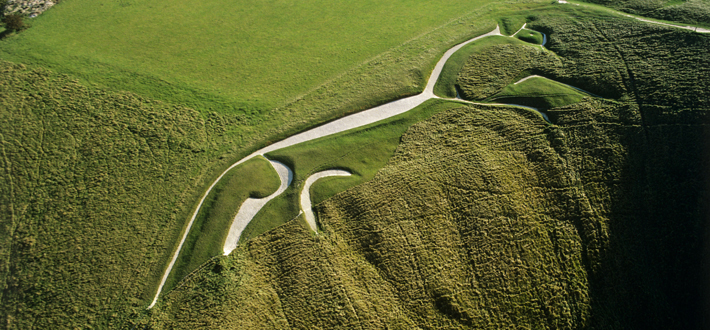
Box White Horse of Uffington White Horse Hill
The Articles of the Barons signed by King John June 15, 1215 at Runnymede ( between Windsor and Staines) were reissued as Magna Carta: the Great Charter of English liberties: 1216, 1217 and 1225. The monarch was always subject to the foundation the social order itself as both source of law and government and reference for judgement: the Church of the baptised nation of England.
But Magna Carta, in guaranteeing ancient liberties of England and its Common Law (as recognized by the Church) was an instrument that gave to the Lords and their courts specific powers over the monarch in his exercise of legislation.
Sovereignty
The modern liberal, constitutional republics and democracies which have been forged in the dark smithies of our Revolutionary Era ( 1789 – ) do not rest upon the ancient foundations of the European nations which formed the Holy Roman Empire of the West. Rather, they are sprung free of that ancien regime and rest upon a foundation that was laid in the principles of the Revolutionary process itself.
The purpose in establishing another jurisprudence has always been to advance the objects of The Owners of the Revolution – the Judaic Supremacy and in the twentieth century their Judaic Imperium.
This basis of any state or social order founded upon the principles of the Revolution is that of Freemasonry. The keystone of its arch is the non-separation of Synagogue and state. All apparatus of state which are part of modern Western governments is owned by the Jewish central bank as an asset of their world pyramid and Money Trust. Karl Marx in Vol. III of The Capital designates this Trust as : a central banking cartel.
In the Revolutionary state, the democratic machine of electoral process is worked as an exercise in statecraft to reinforce an idea in the popular mind that sovereignty derives from the consent of the governed. . This is false. Sovereignty does not derive from the people and it never did in any scheme of things. It certainly and in fact does not derive from people or the consent of the governed in our Revolutionary Era ( 1789 – ) . However, according to the constitutions and democratic charades of these UN member states, the population must be convinced the leaders they elect actually rule them. The de facto rulers take this deception to be their ‘mandate’.
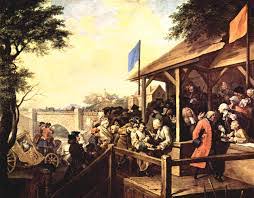 “The Polling” from William Hogarth’s The Humours of an Election (series 1755). The British voters are shown declaring their support either for the Whigs (orange) or the Tories (blue). A Whig voter with an amputated hand places his hook on the Bible and swears to his identity. Meanwhile the Tories have ransacked the asylums and are bringing the indigents and the dying to the polls. The broken down carriage in the background is an analogy of Britannia.
“The Polling” from William Hogarth’s The Humours of an Election (series 1755). The British voters are shown declaring their support either for the Whigs (orange) or the Tories (blue). A Whig voter with an amputated hand places his hook on the Bible and swears to his identity. Meanwhile the Tories have ransacked the asylums and are bringing the indigents and the dying to the polls. The broken down carriage in the background is an analogy of Britannia.
Historically and objectively, the sovereignty of a nation and its government (any actual de facto sovereignty) rests upon occupation. In natural law, this has included conquest and marriage with those who hold and occupy the land upon which they live. There may exist various forms of title in law, but if it can not be enforced – what is it worth? If those holding titles or rights to land under their own laws do not obtain the goods of life and livlihood from the land upon they live and can not enforce their entitlement over nations who do – then they must obtain goods and enforcement from others who will, of course, have their own terms. This is why the Anglo Saxon law recognized trial by combat and Rex Lex.
People do not just spring up out of holes in the ground or emerge from caves on their ancestral land. The essays published on this website hold the Biblical view that nations came into being on the Plains of Shinar and migrated out of the lands that are today called Fertile Crescent. And, of course, in their migrations, they warred over lands and occupation of lands.
An excellent illustration of just how politically incorrect these facts really are can be seen in the NZ films which actually confirm the Biblical record and the Mahabharata in the wars of the ancient Persians ( Elam – a people descended from the Patriarch Shem). They were a maritime people, one of many who circumnavigated the globe in pre-historic times.
Redheads Part 1 of Skeletons in the Cupboard Series
Plumtree Productions
Peter Marsh
Dec 2 2019
Under The Carpet Part 2 of Skeletons in the Cupboard Series
Plumtree Productions
Peter Marsh
Dec. 3 2019
To the Judaic Supremacy, the sovereignty does not rest in natural law. It rests in money (created through usury) as the instrument by which the Directorate of their racial collective exercises ownership over other sovereignties : governments of captured states, corporate sectors, NGOs, Big Tax Exempt foundations, the UN, the institutional organisations of all religions, entire populations of both nation and multi-national states (and their economies). The Directorate has established both their Supremacy and Imperium in Monopoly Capital. Originally governments ceded this sovereign exercise of power in the creation of money to the Jewish interest. Under the Judaic Imperium, these central banks now interlock and structure all assets into the global financial pyramid.
At present the world is experiencing the restructure of the multi-laterals on this pyramid. National populations are merely ground into the mortar.
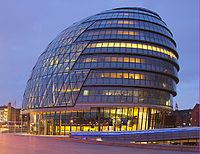
The City of London Corporation

Bank for International Settlements
The Directorate of the Judaic Supremacy and its international organs of state uses the lesser sovereignties of its ownership such as the Communist Bloc nations [ZOG East] , the UK, the US [ZOG West], the EUSSR and the UN to enforce the objects of their imperium in the construction of their world order: all states, organisations and collectives owned by them as corporate assets.
As a banking cartel, this world pyramid of Monopoly Capital is constructed of the central banks whose directorates interlock within a privately owned global money trust. All are vertically integrated to a single Apex. The Owners of this cartel are dynastic heirs of the Princes of Jewry from the Great Synagogue of Mulheim an der Ruhr in Germany who came into ownership of the title deeds to three nations through the loans they made for the English Civil War 1642. These are now the consols of the Bank of England.
Such are the UK secrets of state guarded in the Royal Charter of the Bank of England 1694, they are protected to this day. Most recently in Section 27(9) of the Companies Act 1976 and the Official Secrets Act of 1989. (See End Note)
The Owners direct the foreign policy of states captured and owned by them through their central banks of credit issue (debt). Money is the monetization of debt to the corporate asset. Corporate conglomerates, nation states, NGOs – all are part of the corporate structure of the cartel. These powers are directed by The Owners to make war against any lesser collective or sovereignty deemed to be operating in its own interest – especially a nation attempting to pursue its own national interest in strong families. Their Culture War is a war of subversion against the captured nation and its state. For this War, many ideologies of ‘rights’ have been kitted out, financed and deployed against the ethnic identities of nations they own. These victim status cadres are tasked with the persecution and prosecution of thought crimes and discriminative behaviours like: homophobia , transphobia, Islamophobia, racism, gender fascism, ‘hatred’ of diversity, multiculturalism and of course the motherlode of all Wrongthink: anti-Semitism.
Corporate Structure of the Central Bank – all on Message and on Point with Marxist Correctness of the Communist Revolution.


The global money pyramid of the Judaic Supremacy destroys all other racial and national collectives with pretenses to independence as their world-wide , permanent Communist Revolution (Fourth Comintern 1938 -) has demonstrated. The efforts of nations to organise in their own national and ethnic interests will meet with the armed aggression of a ‘liberation front’ insurgency / guerrilla war or Fifth Column subversion the Culture War – usually both. .
In the ‘War on Terra’ of the 21st century, both Russia and the United States have been directed by The Owners to make war by deception and military aggression against nations which were not subject to the Ownership of the banking pyramid. Soviet Russia (which is still Soviet Russia) trained and supplied the familiar alphabet soup of revolutionaries, insurgencies, terrorist cadres and guerrillas who conducted the armed Communist aggression of the War of the Fourth Comintern ( 1938 – ) in the 20th century . For the ZOG wars of the 21st century for the Oded Yinnon Plan, Greater Israel and ultimately Khazaria Israel, they were simply ‘morphed’ into Islamic Jihadis. And on the command of The Owners, the US military invaded those nations undergoing Revolutionary insurgency and terror. This was the mandate of the ‘Seven Nations in Five Years Takedown’ to which General Wesley Clark referred. Between the Hammer and Sickle of ZOG East and ZOG West, those nations were regime changed and placed under central bank control for The Owners of Monopoly Capital. And they were ethnically cleansed to make way for Khazaria – Israel.
Zionist Global communist takeover wake up
How Jews Infiltrate and Destroy Nations – Dr. William Pierce
Aug 28 2020
To the Church, the sovereignty rests with the Apostolic Succession under the mandate of Christ :
“All power [ exousia ] is given to me in heaven and in earth.” Matthew 28 : 18. DRV. The Greek ‘exousia’ here translated as power has the the meaning of lawful authority and might.
Regarding nations, sovereignty is conferred by Apostolic government upon baptised nations and their government under the Christ Law of the Church which becomes the foundation of the social order for the nation.
Otherwise a nation or a population of nations and its rulers come under the Divine will permissively. And this is consequentially aligned with its moral decisions as expressed in its laws.
“God is not mocked, for whatever a man sows , that shall he also reap.” Galatians 6 : 7
In this real politik, nations that have legislated for the four sins crying to Heaven for Divine vengeance have more obligations than they do ‘rights’. They should expect to reap the whirlwind. In the (by now) virtually universal denial of the right to life – it should go without saying that any rights the government might appear to grant the population are merely extended temporarily under expedience and sufferance. These will be withdrawn when it suits them whether the rulers are manifest to the people or screened by their agents and puppets. Such rights and freedom that the population may be under the illusion it possesses (as by right) rest upon the ‘sand’ foundation of Our Lord’s parable.
Although modern constitutions of republics and states founded in Revolutionary process owned by the Judaic Supremacy and its UN member states might contain many references and provisions for the ancient laws which once held in the Oikoumene and Holy Roman Empire of the West, specifically of England, perhaps even accommodating of their exercise, these laws are being expeditiously voided in substance. At present , they function in the body politic much like vestigal organs without reference to the living, organic and nationalist unity which gave rise to their political and legal definitions and exercise.
A Brief Historical Background to the Magna Carta
Live Honourably
Brew
Jan 23, 2018
Anglo Jurisprudence, which is essentially the Westminster Law and the principles upon which it is based, is a system that developed over millenia. From Roman times, the symbol of this law and system of governance was the fasces with the ‘rod of iron’.
The Bible records only the ‘rod of iron’ as the mace or sceptre of Rome, however, the millennial pagan empire displayed the sceptre within the fasces.
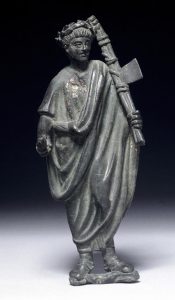
Fasces Britannia Romana. Roman lictor with fasces
The United States Congress, with its inheritance in Roman law and system of government displays the fasces and the mace separately in the US House of Representatives.
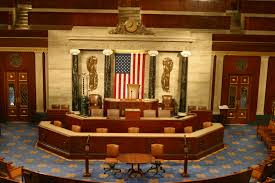
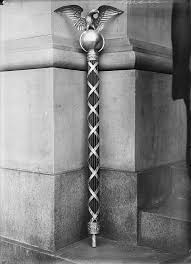
Left: Fasces on either side of the Rostrum and Right: the Mace of the US House of Representatives: the Roman ‘rod of iron’.
In the Annals of Tacitus, Lucius Quinctius Cincinnatus was a Roman patrician who accepted complete power over Rome during a major crisis , then gave up power after resolving it. Like Cincinnatus, the officers of the American Revolutionary War saw themselves giving up power to the representative civilian government to preserve those principles for which they conducted the war in order to return to their farms in peace. The Cincinnati Society was founded in 1783 to honour this highest of Roman civic ideals as exemplified by Cincinnatus.
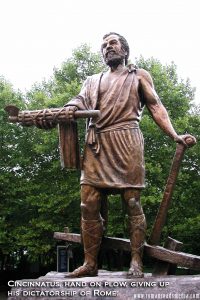 Cincinnatus with the fasces located in Sawyer Point Park, Cincinnati, Ohio.
Cincinnatus with the fasces located in Sawyer Point Park, Cincinnati, Ohio.
In Britannia Romana, this rod of iron passed to all baptised nations baptised into Christ, nations whose states became part of the Christian Oikoumene of Nova Roma under the Emperor Constantine and his successors both in the Christian West and the Christian East. In the Christian Dispensation, these nations both inherited the Roman system of law and government and refounded it upon the Church, thus adapting it to the faith and morals of Christ Law.
The artifacts display this change. In Britain, the Old English mace became adapted to the sceptre of the nation with its crowned Cross.
The Anglo Saxons (Old English) also displayed the mace
 Old English mace of carbon steel.
Old English mace of carbon steel.
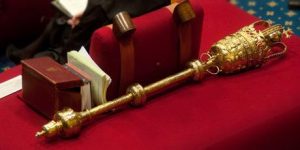 Mace of the House of Lords, British parliament
Mace of the House of Lords, British parliament
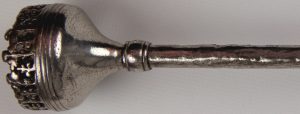 Mace of Stratford Upon Avon Guild of the Holy Cross
Mace of Stratford Upon Avon Guild of the Holy Cross
The Common Law of the nations who followed their kings and nobility into baptism had always belonged to the people. And these customary traditions and laws of immemorial age were also transmitted into the new Dispensation, recognized by the Church and adapted locally within parishes, dioceses and at the level of national government. This is why one sees in the oldest structures many expressions of the older matter – the sheela na-gigs on the Irish stone churches probably being the most famous example.
However, principles that were generative of the pagan system changed with baptism of nations.
Law gave way to Gospel and the precepts of the Gospel became the Dispensation as well as the means of re-founding, shaping and even extinguishing principles of the old Roman system and adapting it to the new jurisprudence. Principles of the highest civic virtue had to take a lesser place in the hierarchy. And some principles like payback, vendetta which had fueled centuries of tribal warfare had to be reigned in under new prerogagitives of the state to adminster the king’s justice.
The baptised nations of the empire formed a new polity, a new union of which Britannia Romana was a part. When the Angles, Saxons and Jutes invaded Britain, settled and were baptised as nations under their kings, they entered into this polity in their own right.
Long before Magna Carta this system of law and government was in place through both Common Law, Westminster Law and Ecclesial Law, as the monarch acknowledged in his coronation oath.
Unlike his predecessors, King John I ( 1199 – 1216) did not issue a general charter at the beginning of his reign which both confirmed and gave definition to the rights of justice that his barons held over their own leiges and subjects. These were decided in the courts of those who held title in the lands. These were the assizes of the Barons, the Witenagemot of the earls and the Shire moots, the ecclesial courts of the Abbeys and the Dioceses of the Church.
And the villages, pastures, Commons, small holdings and guilds of the majority of the population were on those estates held in title.
At the time of Magna Carta, the volume of customary laws in England was based upon judicial decisions and became part of the body of Common Law. It increased steadily throughout the centuries of the Crusades. Claims upon hereditary title to estates were often settled by combat. Under the Anglo Saxon kings of the little kingdoms of England, the matter of the Dane Mark in the North was settled by right of conquest, for example.
The early years of King John’s reign were spent in France pursuing his claim to his estates in Normandy. To raise funds for the English claim, King John had a policy of forcing the noble women of England into marriages that would enable the Crown to seize their patrimony in land and title. He heavily taxed the Lords to pay for his military defeats – especially the unsuccessful invasion of France 1214. And he seized land from the estates of the Church.
But where he seriously crossed the line was in the raising of taxes on a regular basis. This meant the cumulative misery of his financial policies was shouldered by the Commoners.
Peter Bellamy – Poor Honest Man
English Folk
Jan 27, 2019
This is a song against King George (famed afar of the American Revolution) but it might just as well have been written against John I. The Magna Carta was framed to thwart the exercise of tyrannical rule, but by the time this song was written against the Crown, the monarch was not the Crown which then was and to this day is The Owners of the Consols of the Bank of England. And they have entirely suppressed the Westminster Law.
As for John the First (rhymes with Worst) quite the ‘Welcome Home’ awaited him upon his return to England.
Seeing the very real possibility of civil war, the Archbishop of Canterbury, Hubert Walter, the royal adviser William Marshal and justiciar Geoffrey Fitzpeter summoned the Lords of England and promised, on behalf of the king that he would render to each his rights if they keep would faith and peace with him. Normandy was lost 1214 and with it the revenues of that estate to the English Crown. And so King John returned to England to sort out his affairs – a task that would take some doing.
Then, there was King John’s quarrel with Pope Innocent III ( 1198 – 1216 A.D.) over the election of Stephen Langton to the See of Canterbury which he held ( 1207 – 1228 A.D.)
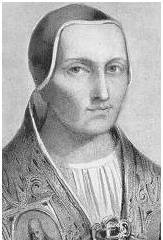
Pope Innocent III.
The king challenged the appointment from Rome and went on to claim that the appointment of the Archbishop should be the prerogative of the Crown. In this conflict of law and jurisdiction between Church and state, the Holy See did not agree that the monarch appointed the bishops of the Church. Pope Innocent issued a papal interdict against him 1208-13. And King John pursued his claim to make episcopal appointments in the face of the interdict, getting himself excommunicated 1209. This may have sorted out the matter of the king’s claim, but it left the Church without means in the face of John’s financial demands.
The Commoners of England were not inclined to be subject to an excommunicated monarch who kept raising their taxes.
When King John made peace with the Church, Stephen Langton duly became Archbishop of Canterbury. And he took the matter of the baronial demands to the King. He advised that a solemn grant of liberties be made from the king and that it be founded on the coronation charter of Henry I.
The Norman Barons, the Saxon Earls and the Abbots and bishops were always opposed to the exercise of tyrannical rule in England. As such, it was the custom of the monarch to recognize the rights of leiges upon coronation.
A charter was needed to check the power of the king’ and his successors against the rights of other titles – rights that were recognized by the Church. Such an instrument was to lay the foundation for Parliament , for not only did other titles , namely the Lords of England have claims upon the king, the Commoners also had claims upon the king and the barons and the earls. They all had a claim upon the Church. And the Church had a claim upon all.
In later centuries, the Parliament of England would sit under Magna Carta – both Houses of Lords and Commons. The Charter secured the ancient liberties of the Common Law recognized by the Church for the Lords of England and this was to be extended to all England. Its terms protected especially the right to due process and barred tyrannical rule and despotism.
In 1215, the Archbishop of Canterbury, Stephen Langton and William Marshal, Earl of Pembroke were instrumental in formulating the liberties that were sought of the king by the barons. These were presented to King John at Runnymede as the Articles of the Barons.
When it is today asserted that Magan Carta made the sovereign or the monarch subject to the rule of law or declared the monarch ‘not above the law ‘, such an assertion does not refer to the precedence of a legal document. It may have come to mean that in our modern Revolutionary Era ( 1789 – ), but in the mind of the Archbishop of Canterbury, Stephen Langton, one of the authors who helped to frame the original Articles of the Barons what this means is: the king is not above the laws of Christ. He must legislate and rule upon the faith and morals of the Church.
Ancient Foundations

The Angles, Saxons and Jutes were baptised nations from the 5th century A.D. The Britons were baptized as a nation in the fourth century. These were nations of little kingdoms, clan and kin, monasteries and abbeys, parishes and dioceses.
The Roman legacy of law, administration and government was an inheritance of Nova Roma from the time of Constantine (4th century) and later the Holy Roman Empire of the West ( 800 AD – 15–). Ancient customary law of the tribes of Albion was recognized by the Church in Common Law. They may have been adapted and configured to the laws and governments of the little kingdoms of Albion, Alba and Cymry. In substance the ancient liberties were there and recognized by the Church, as they were recognized in all sources of law that set upon that foundation.
Since the 5th century AD, the foundation of law and jurisprudence of England was the Church and the Apostolic Constitutions. Upon this foundation were derived different sources of law for specific jurisdictions, but all had to be configured to the foundation of the social order.
Above all, Albion, Alba, Cambria and Hibernia looked to the patronal saints of the Isles.
St. David the bishop of Mynyw is the patron saint of Cymry or Wales and all Cambria
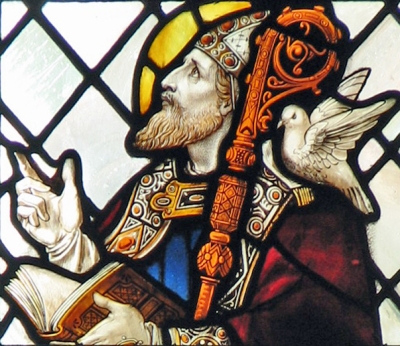
St. David , Bishop of Mynyw and Confessor
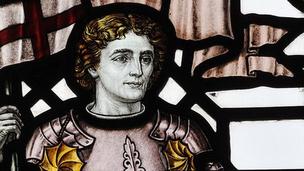
St. George is the patron saint of England and all Albion
https://unicuiquesuum.com/index.php/2020/01/01/ancient-word-of-courage-fair-saint-george/
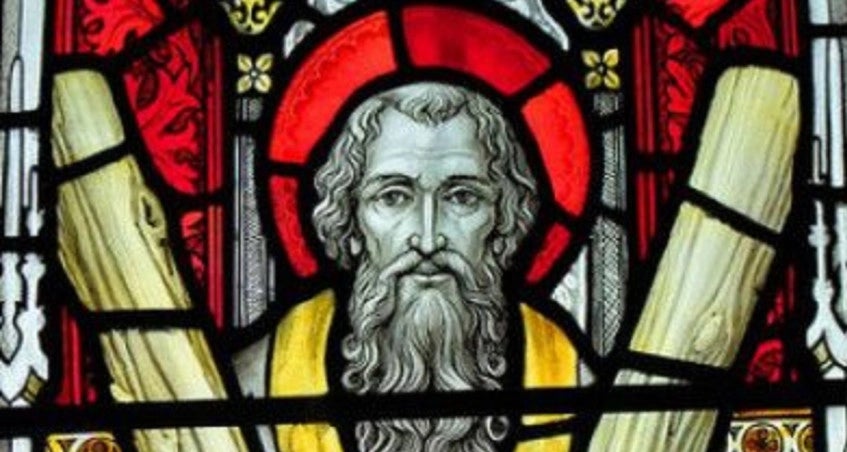
St. Andrew, Apostle is the patron saint of Scotland and all Alba
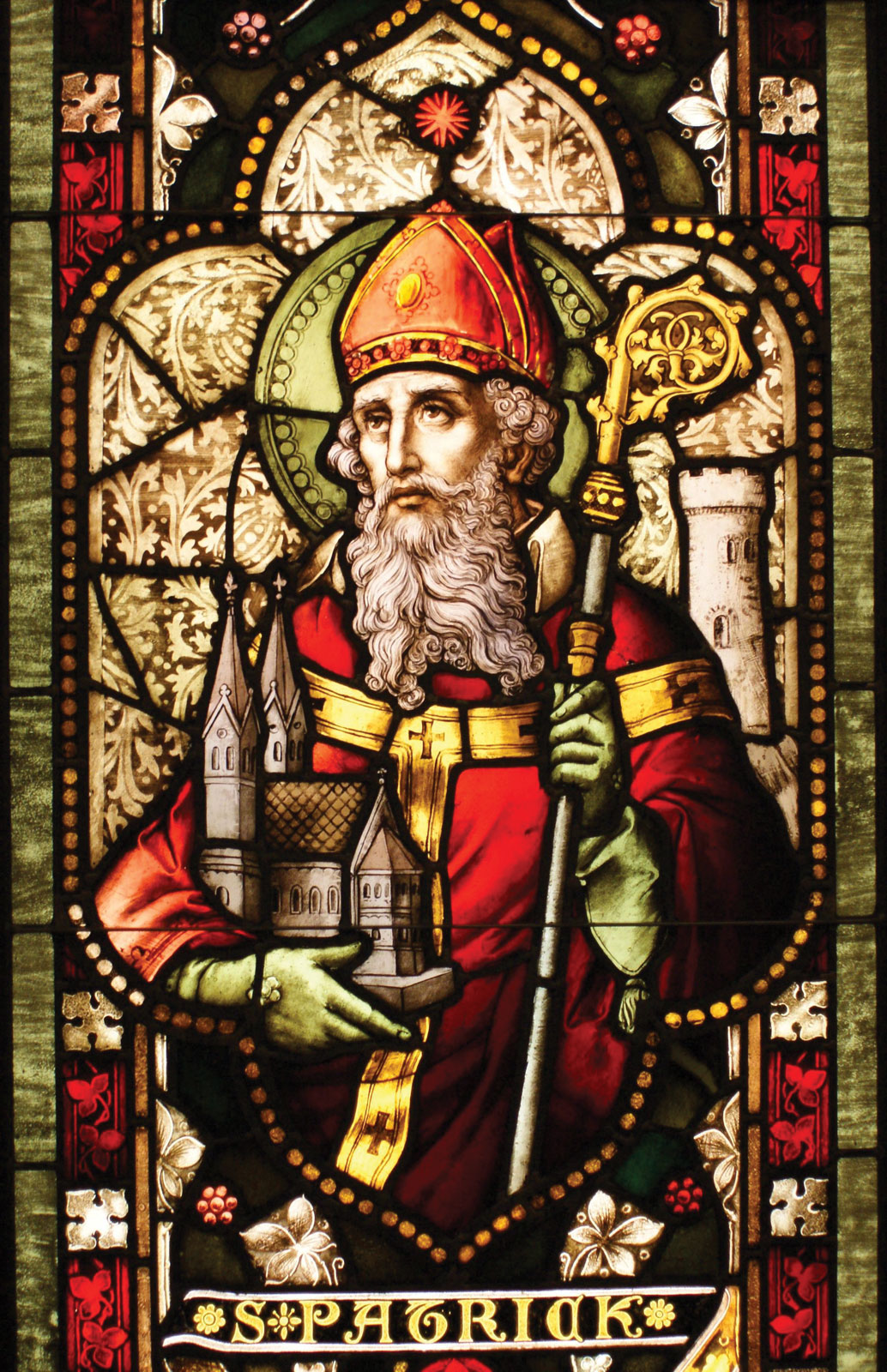
St. Patrick is the patron saint of Eire and all Hibernia
Today Magna Carta serves as both an invocation and last defense to England’s Christian heritage , the foundations of which were being dismantled even in the 17th century.
From antiquity, there were many courts in England with the royal court ( Curia Regis ) functioning as high court in specific matters. And there were many English and French categories of governance, offices, estates, rules and laws – terms that are today obscure – assizes, villein, leige, baron, Hustings, scot and lot, danegeld ( taxes) , weregild ( compensation ) yeoman, lord, serf, pleas outside the walls, wager of battle, folkmote, courts of piepowder, Keeper of the Great Beam (a title of the Lord Mayor of the City of London) etc.
The prerogative writs of Alfred the Great, King of Wessex (871 – 886 A.D.) were part of the royal prerogative recognized by Magna Carta.
But there was one foundation and source of law. And this fact is reflected in the official language of both the Christian Saxon and Norman Law, including the Magna Carta itself , which is Latin.
Much of the Common Law of the Germanic peoples of northern Europe was recognized by the Church in terms of natural justice and rights of the land. The Anglo Saxons had their own codes from the Germanic peoples of northern Europe through long tradition. Ordinarily, the customs of a baptised people were followed. And this body of cutomary law and the liberties of free men recognized by the Church entered the Common Law which was built up and developed through judicial decisions from the time of The Dooms of King Alfred the Great.
The Dooms begin with the Ten Commandments. The seat of England’s Common Law was the royal court of an Anglo Saxon king (Curia Regis). The Earls of England also in possession of estates under allodial , hereditary title had courts for the Commoners of their land and leiges.
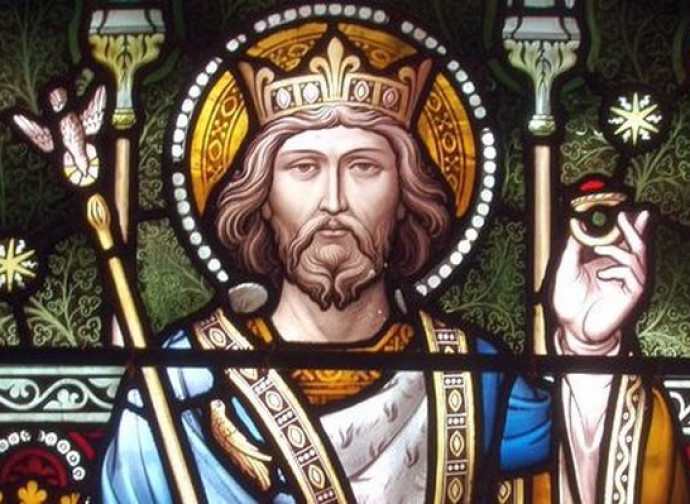
St. Edward the Confessor, also of the House of Wessex (1042 – 1066 A.D.) was the last of the Anglo Saxon Kings.
St. Edward laid the Benedictine foundations of Westminster Law with the foundations of the Abbey. And the Benedictine ‘ora et labora’ (prayer and work) has held for England as a mark of the Christian national character. With the establishment of a single , royal court (Curia Regis), the Abbey became the seat of the Common Law and later, under the Norman Kings, the source of Westminster Law, as a source of law and government.
St. Edward is buried at Westminster Abbey. Construction of the present Westminster Abbey began King Henry III 1245 as the coronation site for the Norman Kings.
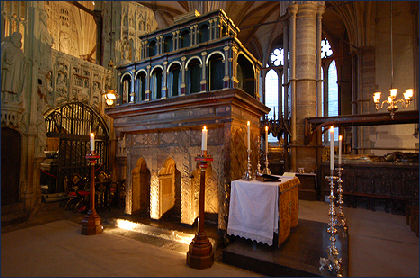
Shrine of St. Edward the Confessor, Westminster Abbey
Prior to the Magna Carta and after it, there were three sources of law in Albion, that is: Christian England ( Anglo Saxon, Dane ) and Britain (the Brythonic Celts) of what is today Wales ( Cymry ). These were the Common Law, Rex Lex of Westminster and the See of Canterbury which governed under the Apostolic Constitutions of the Church. All held courts. The Saxon Earls had the Witegamont and the Shire moots. After the Conquest 1066 A.D. the Barons had the assizes. The judges who sat under the Dooms of King Alfred the Great made rulings for England in terms of the customary laws of the baptised people and built up the body of precedent law that became the Common Law. The Abbots and bishops of the Church ruled their own estates through their own courts under ecclesial law.
The Catholic Faith of the Western Christendom and the Church with its primatial See in Rome gave to England its high-tide of Western Culture and Civilization, Westminster Law and government, Magna Carta and institutions like the Parliament with its House of Lords and House of Commons. This included the respect of the ancient Common Law and liberties of England upheld by the secular and ecclesial courts before and after Magna Carta.
Magna Carta derives from all these sources of law and a jurisprudence that had existed in England for 800 years. The Archbishop of Canterbury was one of the authors of the original Articles of the Barons.
The sovereign was signatory and in setting his seal, he acknowledged that he would govern and legislate on the foundation and the sources of law from which Magna Carta was derived. He is a steward and custodian of this law and its long tradition. He is not the author of it. By the same token, the Magna Carta recognizes Rex Lex. It does not take this to mean, however, that the sovereign makes whatever laws he pleases. The sovereign must rule and legislate upon the foundation of the baptised nation and its state: the Church and the sources of law flowing from it. And there were many examples where King John made political decisions against the canons of the Church in his dealings with England, both noble and common, where he went against the Common Law of the Shires and the The Dooms. In the exercise of despotism King John I went against all sources of law in England.
In a conflict of laws, the canons of the Church would take precedence over Rex Lex – because the Church is foundation of the social order for the baptised population. The courts of the barons and the earls had to rule upon this source of law.
Magna Carta documented the liberties of free men of England, the ancient liberties of the Common Law as recognized by the Church.
In 1215, the Church of the Western Patriarchate with its primatial seat in Rome was the basis of social order in England and it was the foundation of Christ Law : jurisprudence and legislation. The faith and morals of the Church and the Apostolic Constitution of the reigning papacy formed and constituted the basis of Christ Law in England with monarchy and hereditary titles established and judgements made upon it both in the secular and ecclesial courts of England. Under Magna Carta. Parliamentary legislation flowed from it.
There was no need for a ‘constitution’ with letter of law as such . As a charter, the Articles of 1215 and in its later editions: Magna Charta, was written upon the foundation of Christ Law and that is the Church: the living foundation and organic constitution of the European nations which formed the Western Christendom.
This was removed at the time of the Reformation when Henry VIII, claiming ‘divine right of kings,’ began to legislate on his own authority against the morals and faith of the Church, against the sources of law for England given definitive expression in Magna Carta which does not recognize any such authority.
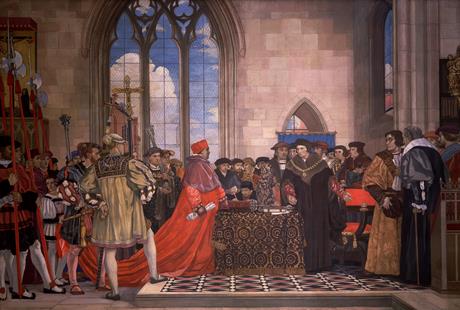
In this famous painting by Vivian Forbes , St. Stephen’s Hall, English Parliament , London, the King’s Chancellor , Sir Thomas More, defends the right of the Commons against the Catholic traitor Cardinal Wolsey and King Henry’s Oath of the Supremacy.
While England still had the monarch as a pillar of government, many principles of Magna Carta could still serve the free population, even though it had became irrelevant to the Roman Catholic population of England living under centuries of penal law.
With the accession of the Judaic Supremacy , however , post the Acts and Order of the Succession in the 17th century, the Crown and the monarchy are not the same institution. The Crown is the head of The City of London Corporation. The Parliament can only makes the laws under the supervision of the Synagogue and The City of London Corporation.
At the time of the Magna Carta, London itself, may have been designated as a ‘bundle’ (fasces) of communities, townships, parishes, lordships – each with its own charter. (See McBain in the Endnotes ). But those charters were written upon and subject to one jurisprudence as guaranteed by the highest offices. The monarch and the Archbishop of Canterbury were the guarantors and stewards of it, they were not in themselves the source.
From the time of The Dooms, many ancient liberties of England’s customary law became part of the body of Common Law recognized by all in both custom and precedent. The right to the highways and bye-ways , the right of field and stream and the forest sanctuaries, the right to mow meadows for hay, the freedom to go to the holy wells where ‘the king’s writ did not run’, for example.
These come from the pre-Christian times, yet such precedents of the ancient liberties held good in the Common Law of baptised England.
The Synagogue always had its own law, namely the Talmud. With the blood passovers and the usury of the Synagogue there was a conflict of law from the time England became a baptised nation under the Christ Law of the Church. Conflict of law existed with the ancient stronghold of the Jews in England, namely The City on the square mile of London. Their corporation: The City of London Corporation (chartered in the 12th century) is recognized in Magna Carta as well as its ancient liberties. But this did not extend to Blood Passovers just as the ancient liberties of the Common Law did not extend to the pagan Wicker Man burnings, niding and peat bog sacrifices of the Old Religion. England might have customarily burned the Yule log during the Yule and the Winter Calends, but the England of the Christian Kings would never have countenanced the burning of an Oak sacrifice as a rite of the old religion. In the same way, the murder of little St. Hugh of Lincoln infuriated England and Edward I expelled the Jewish population under the Edict of Expulsion 1290.
https://bloodpassover.com/xbp.pdf
Ariel Toaff. Blood Passover: the Jews of Europe and Ritual Murder. 2007
The Rex Deus remained secure in the religious orders it had established for the Crusades within the Church as a hidden stream of Judaism established within the Church for the ruin of the Church (in due course). And the wealthy nobility of Jews which supposedly had been baptised – and maybe some of them were – had recourse to these orders remaining untouchable then as now.
Within the Parliament, there also developed unwritten codes like that of the respect commanded by the Parliamentary Comaraderie of which Jacob Rees Mogg MP for North East Somerset and Leader of the Commons is a contemporary master. He is a member of the Commons but in Comaraderie he is without peer.
Rees-Mogg in action.
https://www.youtube.com/watch?v=Wc9b08J2KrA
The Church recognised both the unwritten codes and the body of the Common Law in terms of natural justice. Magna Carta is framed upon this jurisprudence. Crimes were treated as wrongs for which the victim was compensated. Just as many elements of the customary Anglo Saxon codes passed into the Dooms of King Alfred the Great and Westminster, so : jury of peers, ordeals (trials by physical test or combat), prerogative and judicial writs, the practice of outlawry – putting a person beyond the protection of law ( Article 39) was given definitive statement in Magna Carta.
Both church and state rested upon the same foundation of universal Church, but in the jurisprudence of England there were separate jurisdictions. On the whole, Magna Carta tended to extend liberties and provisions that had belonged traditioinally to specific groups or jurisdictions and make them applicable in wider spheres.
Rivalries over jurisdiction were always pursued in the course of English law. Appeals from the assizes of the Barons and the Shire moots could be made to the Curia Regis. Under ecclesial law, diocesan courts could appeal to Canterbury or to Rome. In conflicts of law – the canon law would prevail if it came to the test – as it did with when Rome ruled against King John I in the matter of episcopal appointments and Henry VIII in his demand for the Oath of Supreamcy and the right to make his own laws against the canon law of the Church, against Magna Carta, as well as the House of Commons which, following the Chancellor Sir Thomas More, opposed the Act of the Supremacy 1534.
This was the Act of Parliament which laid the axe to the root of Magna Carta. And in this type of conflict of law, the matter is going to come down to trial by combat if a significant number of people are not going to have imposed upon them a law which vitiates the foundation of the social order itself.
In 1536 this was ‘the Pilgrimage of Grace’ uprising of Yorkshire, Cumberland, Northumberland and North Lancashire. This was the most important of all the Tudor rebellions because it was a rebellion against the king’s break with Roman Catholic Church, the dissolution of the monasteries – seizing their properties and destroying the social infrastructure of the people in their parishes and dioceses.
The Uprising of the North against the Act of the Supremacy 1534 was put down by force of the king’s arms in the next two years. And the Catholic population of England that would not agree to the Oath, the repudiation of the rights of the Church etc. remained under penal law for centuries.
Magna Carta – the History of the Signing
The monarch, King John, famous even today for his taxes, was weak and prone to foreign adventures. The abbots and bishops of the Church sat in the House of Lords together with the Norman, Saxon and British nobility of England. That was the spiritual and temporal authority in the England of the Magna Carta.
The English Great Charter of liberties was granted by King John of England ( 1199 – 1216 ) at Runneymede on June 15, 1217 under threat of civil war and re-issued with alterations in 1216, 1217 and 1225.
More importantly, it was issued through sources of law that been established for over 700 years.
An initial draft of the Charter was read at St. Albans abbey 1213. From documents that have survived in the years which led up to the sealing of the Great Charter , King John would appear to have realised that he would have to grant free election to ecclesiastical offices and meet the general demands of the barons. Even so, in the months after the sealing of Magna Carta at Runeymede, war broke out between John and his barons.
The fact that King John was signatory to the Articles of the Barons is evidence that he wished to avoid civil war. He was prepared to agree to the barrons’ demands for a definition of their rights under feudal law – as his predecessors had done, the custom of the Christian kings of England.
His predecessor, Henry II began his reign (1154 1189) by issue of a solemn charter that promised to restore and confirm his recognition of the liberties and free customs that his grandfather, King Henry I had acknowledged before “God and holy church and all his earls, barons and all his men.”
Magna Carta went farther, however. Clauses in the Articles of 1215 even allowed his subjects to make war upon him. Clause 61 was prudently omitted from reissued versions of the Great Charter after the death of King John 2016. The war with France continued. Just as King John had pursued his claims upon Normandy, King Louis of France (Louis VIII) supported by rebellious English barrons then attempted to gain control of England. And the French were stuck with the taxes for his campaigns.
Pope Innocent III (1198 – 1216) who had initially ratified the king’s seal on the document, later revoked it. But after King John’s death 1216, King Henry III (under 9 years of age sealed it again. And the pope again ratified the king’s acceptance when King Henry came of age.
King Henry III ( 1216 -1272) reissued Magna Carta November 12, 1216 in hope of recalling men to their alleigance. And the Church held to a general promise of freedom and the purpose of the reissue. This was to give an authoritative statement of English law and practice in a political situation where Louis VIII of France was campaigning to gain control of English estates. The Saxon earls opposed this. Many of French barons , of course, supported the French king.
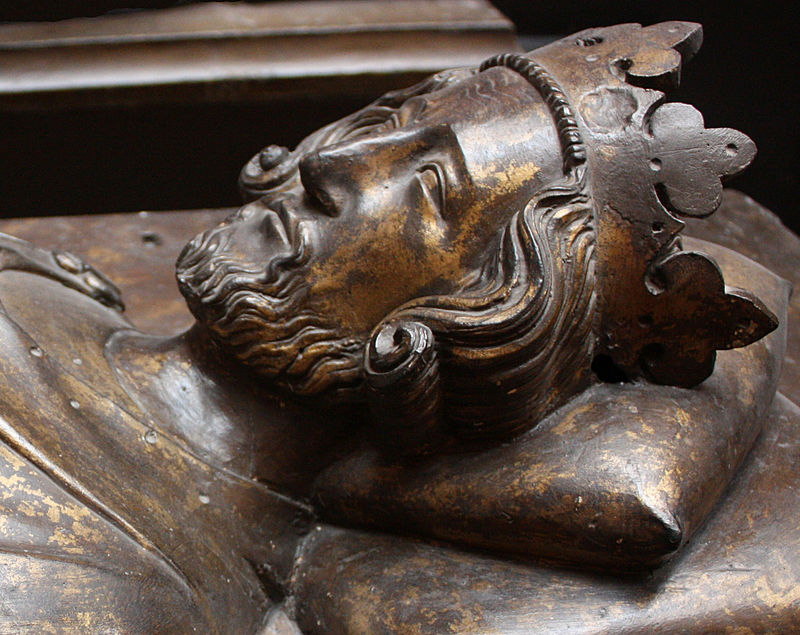
King Henry III
When Pope Honorius III ( 1216-27) recognized Henry III was of age to make valid grants 1223, the young king again reissued the Magna Carta 2 years later.
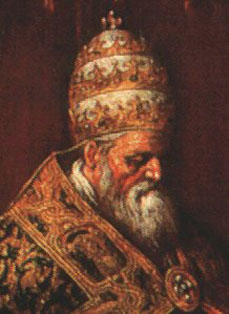
Pope Honorius III
By the time of the 1225 re-issue the Magna Carta was more than a statement of the Common Law. Its influence in England and later its colonies was not in the details of feudal relationship between leige lord and subject or king and leiges but in the rights of a free people under law, especially the right to due process ( clause 39 of the 1215 charter). It had become pledge read in the shire courts throughout the land – the right of one to be tried in court to know the charges against him, the right to a fair trial.
An account of the sealing of the Magna Carta has been preserved by the historians of St. Albans abbey where an initial draft of the chart was read in 1213. Four original copies of the charter 1215. Two are held by the cathedral churches in which the were originally deposited – Lincoln and Salisbury. Two are in the British Library. Lincoln also holds the forest charter which was appended in 1225. Durham Cathedral holds the 1216, 1217 and 1225 issues.
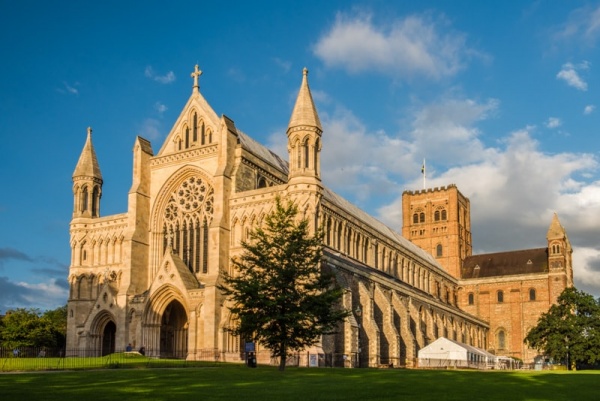
Cathedral and Abbey Church of St. Alban in St. Albans , England
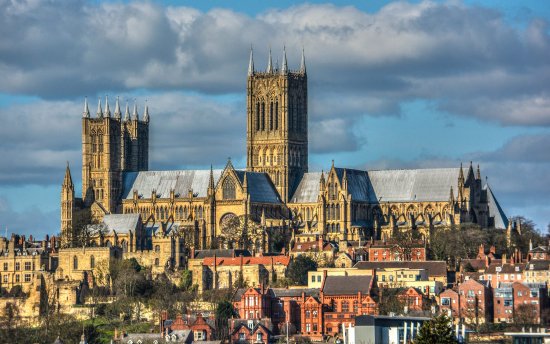
Lincoln Cathedral, Lincoln Minster
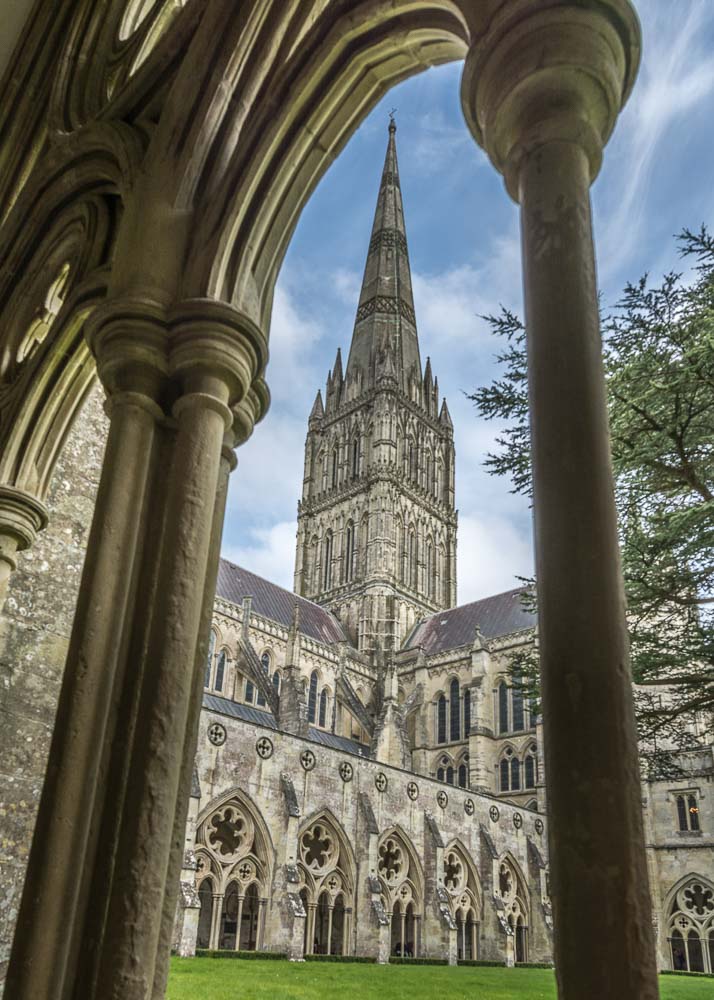
Salisbury Cathedral
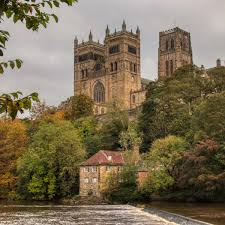
Durham Cathedral and Shrine of St. Cuthbert
The House of Commons began sitting in a chamber or ‘house’ separate to that of the Lords and dates from the second half of the 13th century ( 13th) when landholders and other property owners in the counties and towns began to send representatives to the Parliament – then the House of Lords and petition the king to accept commitments to the payment of taxes. In the 14th century – knights and burgesses were chosen as representatives.
Magna Carta is generally recognized as Europe’s first written constitution. It is considered to be the foundation for individual rights in Anglo-American jurisprudence. One third of the provisions of the US Bill of Rights look to the Magna Carta as their antecedent.
Can they be guaranteed by an American sovereignty that is owned by the Judaic Supremacy through the instrument of its central bank of Monopoly Capital – namely the Federal Reserve Bank.
That is the doom that America and all nations of England’s blood will deem in our time.
Oak , Ash and Thorn
Brew
Jan 22 2018
“England shall bide till Judgement Tide by Oak and Ash and Thorn”
End Notes –
https://www.britannica.com/topic/Magna-Carta
http://citeseerx.ist.psu.edu/viewdoc/download?doi=10.1.1.933.7747&rep=rep1&type=pdf
Liberties and Customs of the City of London – Are There Any Left
International Law Research; Vol. 2, No. 1; 2013 ISSN 1927-5234
Published by Canadian Center of Science and Education
Graham S. McBain
Charter of Richard 23 April 1194
The City of London Corporation administers the square mile of London City.
Governed by a series of charters from c. 1132. Charters in which sovereigns of England in return for generous loans and sums of money granted to the City of London many Crown prerogatives (liberties and franchises)
Stephen Mitford Goodson, a former non-executive director of the South African Reserve Bank. A History of Central Banking and the Enslavement of Mankind ( 2014). Inside the South African Reserve Bank: Its Origins and Secrets (2014). Mitford gives a historic and economic account of the Bank of England’s agenda for a global system of central banks that was established for the ownership of nation states as assets of that cartel. This agenda was directed by Montagu Norman, governor of the Bank of England. These are essential texts for the twenty-first century.

